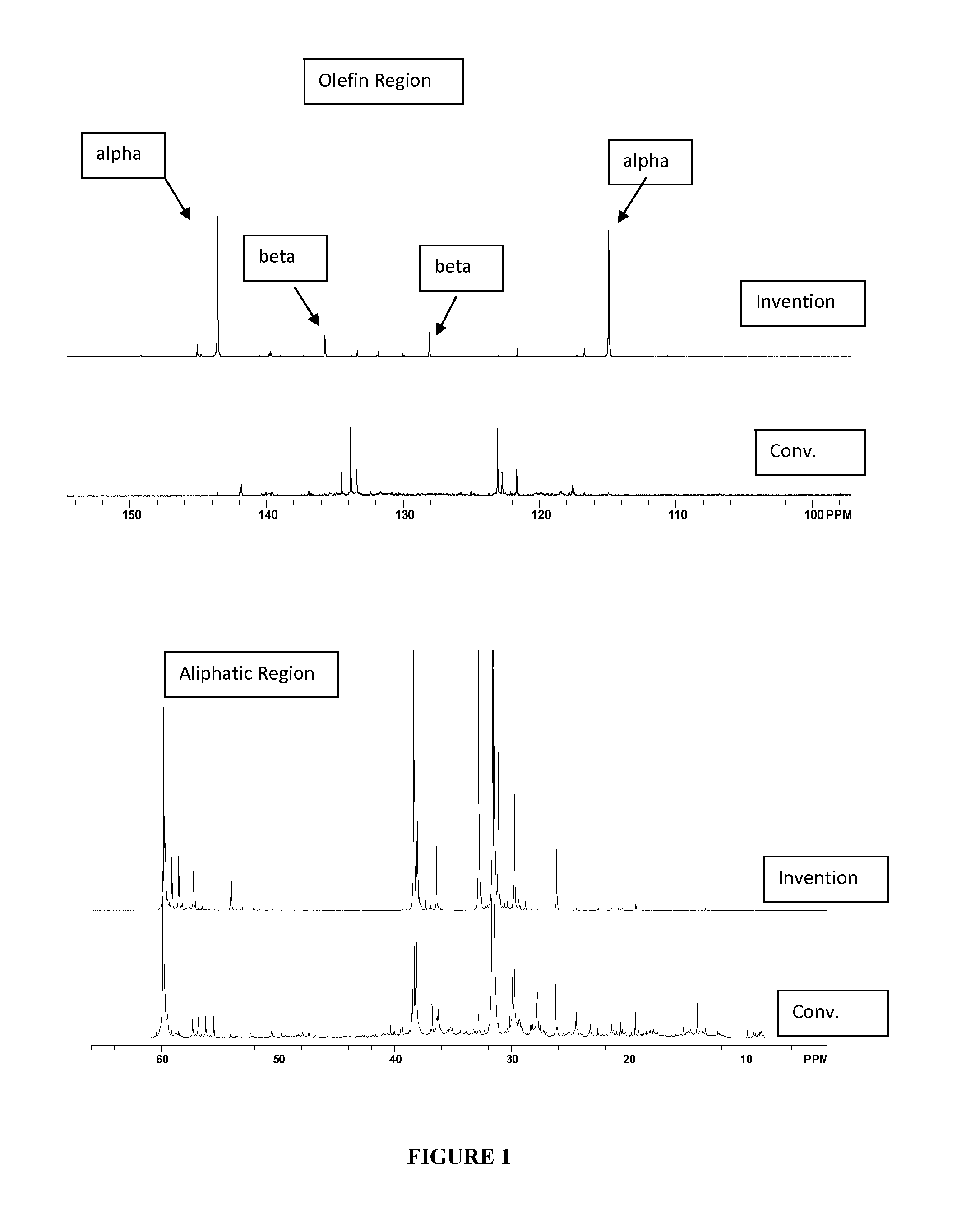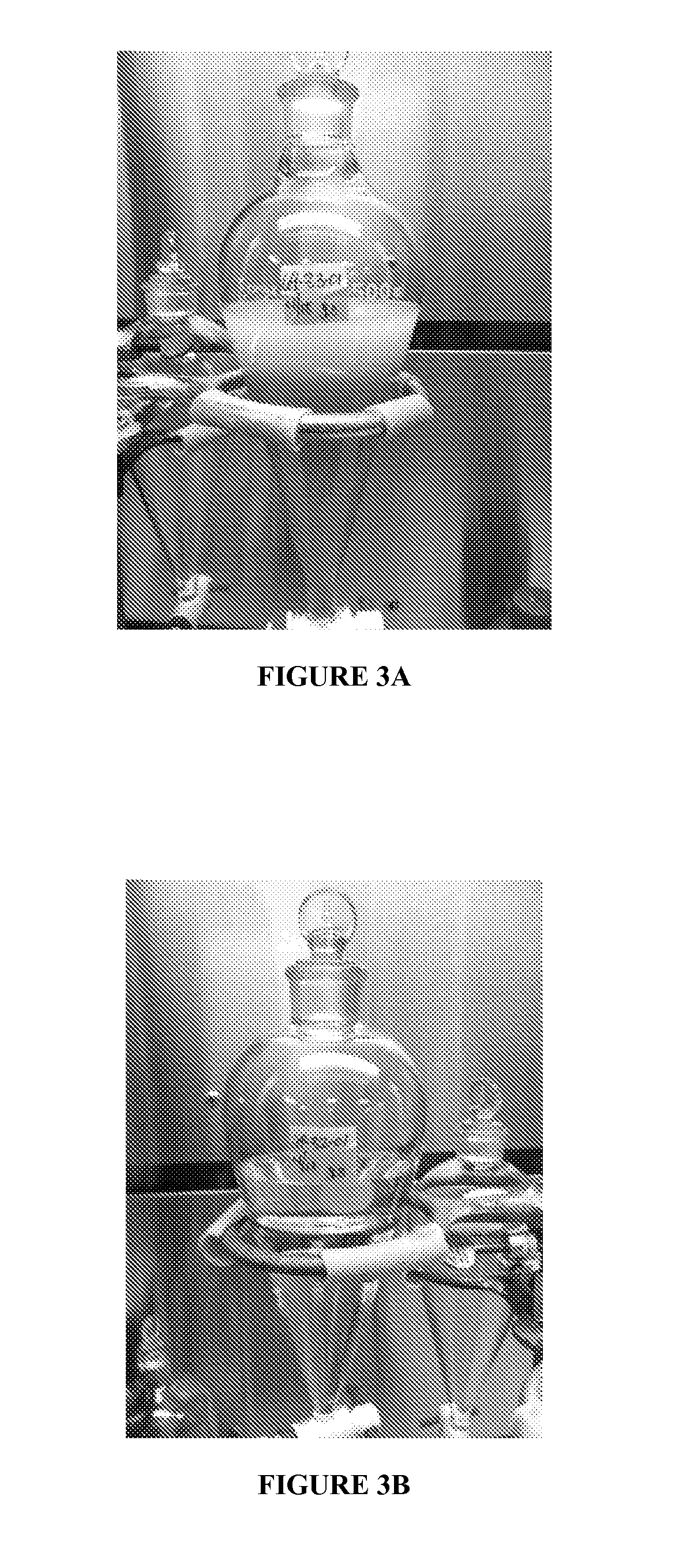Adducts of Low Molecular Weight PIB With Low Polydispersity and High Vinylidene Content
a technology high vinylidene content, which is applied in the field of derivatives of polyisobutylene (pib), can solve the problems of low molecular weight pib, which is notoriously difficult to produce, and the material is not chlorid
- Summary
- Abstract
- Description
- Claims
- Application Information
AI Technical Summary
Benefits of technology
Problems solved by technology
Method used
Image
Examples
example 1
[0044]Production was conducted in a loop reactor wherein Isobutylene 99.95%, DIB with butylated hydroxytoluene (BHT) present at a concentration of 75 ppm in the DIB and the BF3 methanol catalyst complex were added to the reactor loop. The flow of monomer was maintained at a constant rate. Reaction was carried out at temperatures between 80 and 95 F. The pressure in the reactor loop was maintained at @ less than 200 psi. Modifier (methanol) flow was maintained at a certain ratio to the initiating species. Molecular weight measurements were made by size exclusion chromatography (SEC) using PIB standards. BHT was calibrated using a GC-MS instrument. A PIB product in the 600 Mn range was produced.
[0045]The material of Example 1 was analyzed by 13C NMR and compared with a commercially available, conventionally prepared low molecular weight PIB having a number average molecular weight, Mn, of 700 and a polydispersity of 1.85. Results appear in FIG. 1 and in Table 1, below, wherein it s se...
example 2
[0046]Two gms of phenol dissolved in 10 ml of methylene chloride are added to a reaction vessel (3 necked flask). To it, was added 20 mL of polysiobutylene stock solution (containing the low molecular weight PIB of Example 1) in methylene chloride (concentration 0.25 gms / mL). 1.86 mmol of BF3-methanol catalyst solution was then added dropwise to the reaction vessel, gradually such that the reaction temperature did not rise. The reaction vessel was then closed and the reaction was conducted in a nitrogen atmosphere. After 300 minutes, the reaction was quenched with a few drops of triethyl amine (till a color change was observed). Hexane (100 ml) was added to the reaction vessel and the reaction mixture was poured into a separation funnel. An equal volume of acetonitrile (MeCN) was added to the separation funnel. The reaction contents were washed 3 to 4 times to remove excess phenol. The hexane phase was subsequently washed with an equal volume of water with 5 mL of 1M hydrochloric ac...
example 3
[0047]The same procedure as in Example 1 was followed with the exception that the polymer stock solution was now made with the conventional low molecular weight PIB described above.
[0048]FIG. 2A is a photograph, before work-up of the material of Example 3 wherein it is seen that the crude product had a deep red color. On the other hand, the product of Example 2 of the invention produced a relatively clear product as is seen in FIG. 2B. Without intending to be bound by theory, it is believed that the numerous impurities in the conventional material seen in FIG. 1 are believed to produce color bodies upon reaction which have adverse effects on appearance. The color is difficult to remove and persists even after work-up as described in Example 2.
[0049]In this regard, there is shown in FIG. 3A a photograph of the first wash / separation of Example 3, wherein it is seen the crude product washed with acetonitrile (upper phase in the photograph) has persistent color. FIG. 3B is a photograph ...
PUM
| Property | Measurement | Unit |
|---|---|---|
| number average molecular weight | aaaaa | aaaaa |
| number average molecular weight | aaaaa | aaaaa |
| polydispersity | aaaaa | aaaaa |
Abstract
Description
Claims
Application Information
 Login to View More
Login to View More - R&D
- Intellectual Property
- Life Sciences
- Materials
- Tech Scout
- Unparalleled Data Quality
- Higher Quality Content
- 60% Fewer Hallucinations
Browse by: Latest US Patents, China's latest patents, Technical Efficacy Thesaurus, Application Domain, Technology Topic, Popular Technical Reports.
© 2025 PatSnap. All rights reserved.Legal|Privacy policy|Modern Slavery Act Transparency Statement|Sitemap|About US| Contact US: help@patsnap.com



